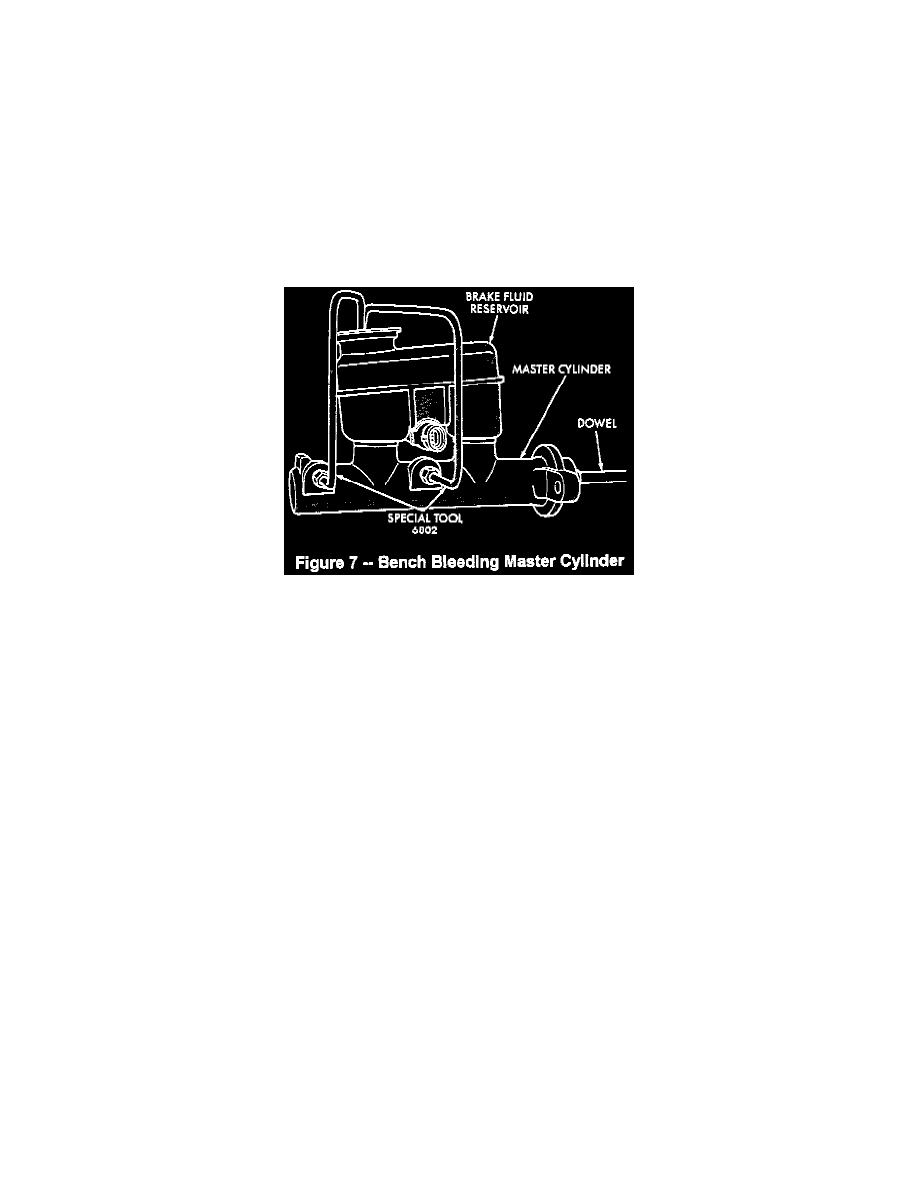Stratus L4-2.4L DOHC (1995)

c.
Install reservoir onto master cylinder body using a rocking motion (fluid level sensor must be on outboard side when installed in vehicle).
There must be no reservoir-to-grommet gaps, or grommet-to-master cylinder body gaps. If gaps exist, the piston pins may not be fully
inserted (Figure 6).
Caution:
Make sure piston pins are inserted properly and that the grommets do not contact the ends of either pin. Failure to insert pins will cause brake
drag.
14.
NON-ABS equipped vehicles only: Using the supplied dowel rod, stroke and hold the primary piston assembly beyond the snap ring groove in the
master cylinder body and install provided snap ring (Figure 5).
Caution:
Make sure snap ring is fully seated in groove. Be careful not to damage cylinder bore when using snap ring pliers.
15.
Attach Miller Special Tool # 6802 bleed tubes to primary and secondary outlets and position tubes so the outlets will be submerged in brake fluid
when reservoir is filled. Fill master cylinder reservoir with clean brake fluid conforming to DOT 3 specifications. Bench bleed master cylinder by
using the provided dowel rod. Slowly depress pistons with dowel rod1 then allow pistons to return to the fully released position. Repeat this step
several times after no air bubbles are expelled from the bleed tubes. This will insure all air is bled from the master cylinder (Figure 7).
Note:
DO NOT install the master cylinder without following the above bench bleeding procedure. When this procedure is followed, it is not
necessary to bleed the entire vehicle brake system.
16.
Remove the bleed tubes from the master cylinder outlet ports. Verify that brake fluid drips from both the primary and secondary outlet ports. Plug
outlet ports with the supplied plugs, top off reservoir with brake fluid and install reservoir cap.
Note:
If brake fluid does not drip from the primary and/or secondary outlet ports, the master cylinder must be disassembled and the appropriate
compensation port cleaned. On ABS master cylinders, no fluid dripping from an outlet port may also be caused by a missing/damaged piston
pin or damaged piston center valve.
17.
Install master cylinder assembly onto power brake booster studs. Align brake booster push rod with hole in master cylinder primary piston, then
seat master cylinder against booster. Slide brake tube support bracket onto inboard mounting stud. Torque two attaching nuts to 250 in-lbs (28
N.m).
18.
Remove master cylinder and brake tube plugs and attach brake tubes to master cylinder. Torque tube nuts to 145 in-lbs. (17 N.m).
19.
Attach wiring connector to reservoir brake fluid level sensor.
